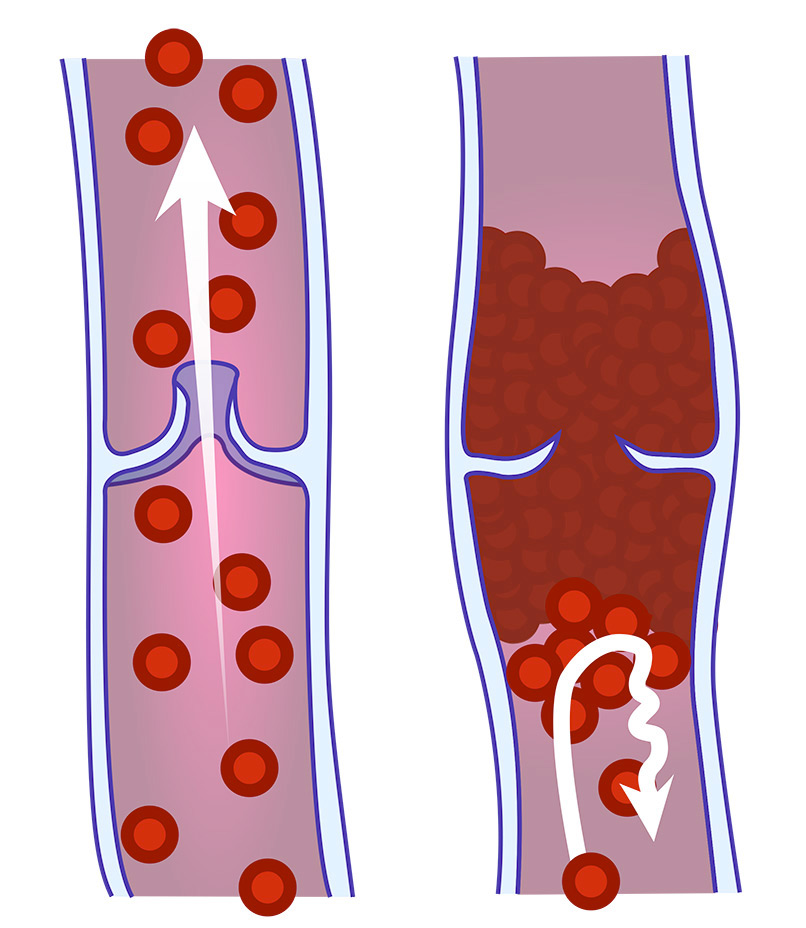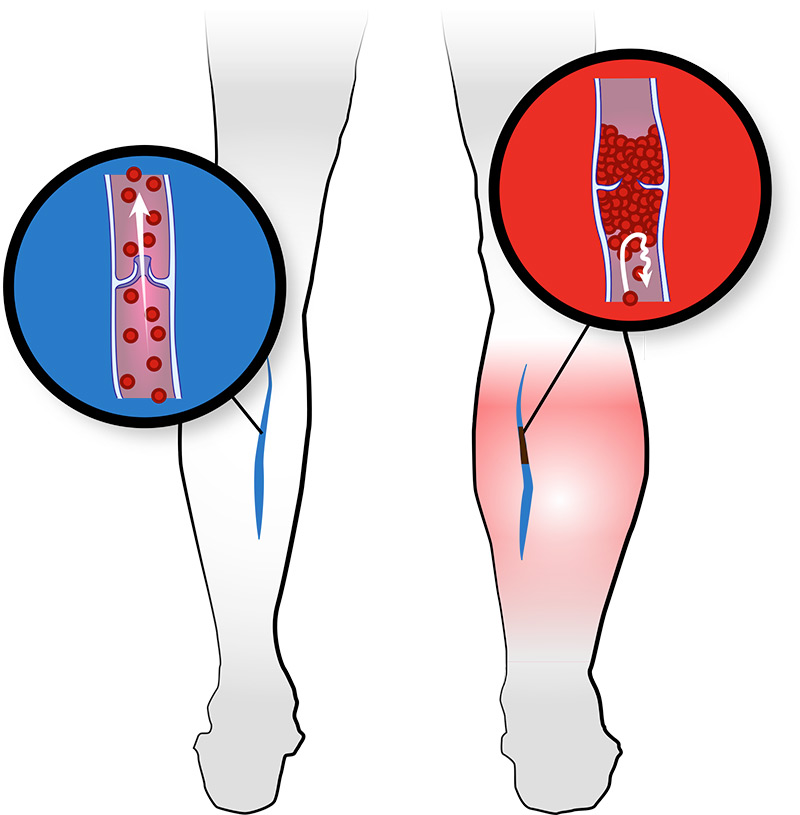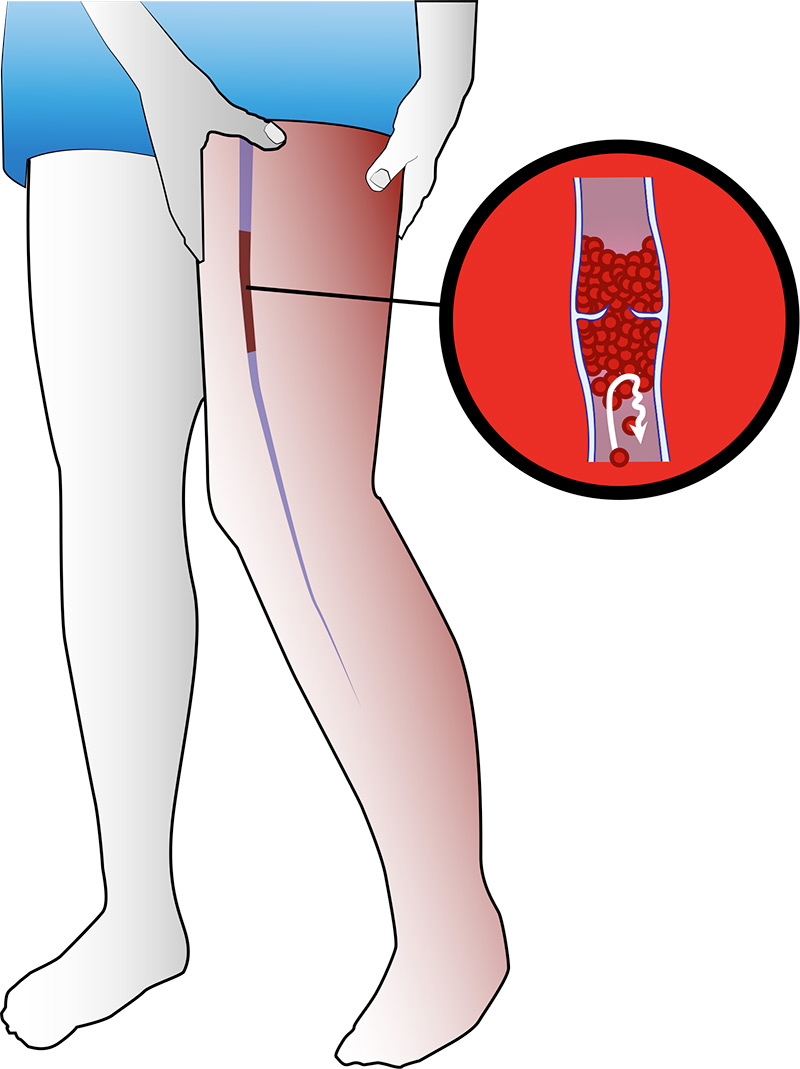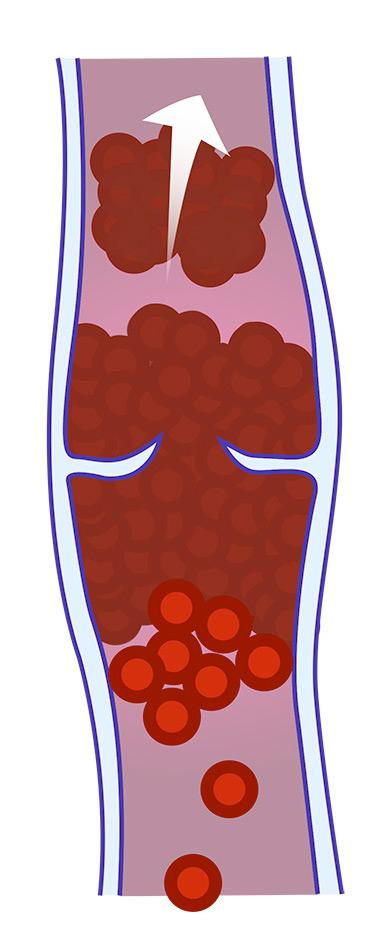Deep vein thrombosis
What is deep vein thrombosis (DVT)?

Deep vein thrombosis occurs when a blood clot forms within a vein. The blood clot (also called a thrombus) can block blood flow in the veins. Although a blood clot can form in any of the deep veins in the body, it is usually leg veins that are affected. This condition is also commonly known as phlebitis or thrombophlebitis.
What causes DVT?
Several factors can lead to the formation of a blood clot.
- Risk factors present at birth, including genetic causes that affect the coagulation of blood and increase the risk of formation of blood clots
- Health conditions that can increase the risk of blood clots. Severe obesity is one example. In some cases, the blood clot may be caused by a temporary situation, such as:
- A prolonged period of immobility (bedrest during hospitalization, a long flight or leg in a plaster cast)
- Surgery
- Pregnancy
- Certain medications (hormonal contraception (ex. “the Pill”) or hormone therapy)
- Cancer
- Inflammatory diseases
More long-term causes include:
Quite often, no specific cause for the thrombosis can be identified. In such cases, the thrombosis is said to be idiopathic (of unknown cause).

How can you know if you have deep vein thrombosis?
In most cases, the main symptoms associated with DVT are:
- Painful swelling of the leg;
- Reddened skin and a feeling of warmth in the leg;
- More visible surface veins on the leg.
These symptoms can be of particular concern if they appear suddenly (within a few hours) and affect only one leg.

Signs and symptoms of deep vein thrombosis
- Bluish discolouration or redness of the skin in the affected leg
- Warmth to the touch
- Dilated veins (visible veins on the skin’s surface)
- More rarely, deep vein thrombosis can occur in the arms, with symptoms similar to those affecting the legs.
Pulmonary embolisms are often caused by deep vein thrombosis. The thrombosis is what creates the clot, which can break off and travel through the bloodstream to the lungs, where it can become lodged in an artery and block blood flow to part of the lung. If the symptoms of a pulmonary embolism occur at the same time or shortly after the onset of symptoms of deep vein thrombosis, the chances of suffering a deep vein thrombosis are very high.
What are the possible complications associated with DVT?

The most common short-term complication associated with deep vein thrombosis is a pulmonary embolism (blood clot in the lungs). When a blood clot forms in a leg vein, part of it can break away and travel through the bloodstream to the lungs, where it can block one or more blood vessels.
In the long term, people who have had a deep vein thrombosis are at risk of developing post-thrombotic syndrome. This complication occurs when damaged veins in the leg have difficulty carrying blood back to the heart. Fluid builds up in the leg and causes swelling, which tends to get worse at the end of the day. People may experience heaviness of the legs and may even see changes in the colour of the skin, which becomes darker (bluish or brownish). In severe cases, this can lead to sores (ulcers) on the leg.